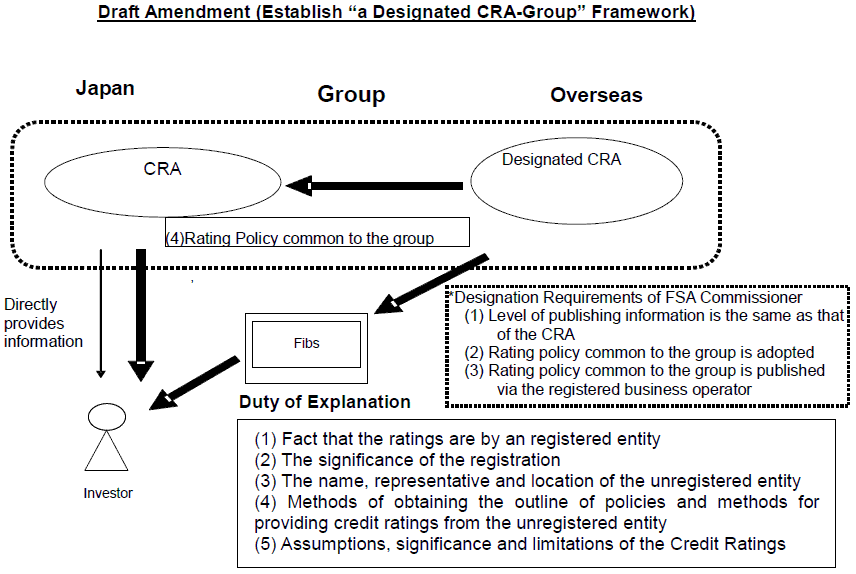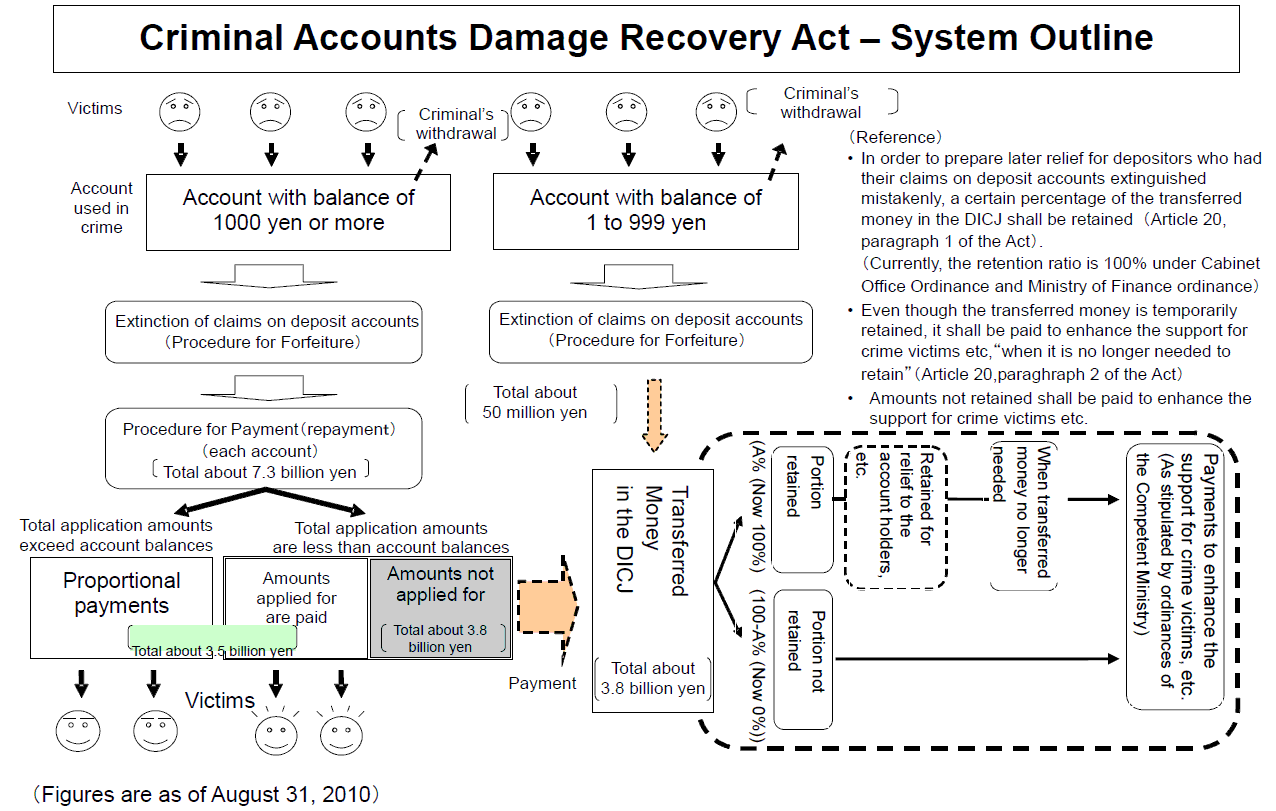 |
 |
Senior Vice Minister Shozo Azuma gives a press |
Parliamentary Secretary Takashi Wada |
Featured
Press release, “The Group of Governors and Heads of Supervision announce higher global minimum capital standards,” announced by the Group of Governors and Heads of Supervision
The oversight body of the Basel Committee on Banking Supervision (Basel Committee) is the Group of Governors and Heads of Supervision, which announced on September 12 specific levels for global minimum capital standards, and transition periods and transition measures.
1. Background and History
On December 17, 2009, a series of draft regulatory reforms on internationally active banks were put to consultation by the Basel Committee. These were agreed on at last year’s G20 London Summit in April, and reconfirmed at the Pittsburg Summit that September. They are positioned as a draft of international rules to improve both the quality and quantity of bank capital, and reduce excess leverage, while also determining liquidity standards.
This draft shows that minimum standards will be set for required levels of (1) Common equity capital ratio, (2) Tier 1 ratio and (3) total capital ratio. Also, from the viewpoint of obtaining a smooth transition to the new regulations, measures for implementation in stages and grandfathering (even after new regulations are implemented, existing treatment is recognized for a certain period) will be set for sufficiently long periods. In addition, specific level adjustments and transitional measures will be studied, in consideration of a Quantitative Impact Survey (QIS) based on data gathered from each country’s bank, macroeconomic impact assessment, etc.
This press release announced the content of the agreement based on such studies, regarding the level, transition periods and transitional measures of international equity capital ratio regulations.
2. Agreement by Group of Governors and Heads of Supervision (September 12) - Main Points
Minimum required levels were previously regulations for an 8% total capital ratio, partly comprised of a 4% Tier 1 ratio. In contrast, the new regulations will be an 8% total capital ratio, partly comprised of an overall 6% Tier 1 ratio, which is partly comprised of a 4.5% common equity capital ratio (see Figure 1). Also, one must also consider that under the new regulations, strict regulatory calibration (deduction items, etc.) by common equity capital are applied, with stronger requirements for including items in Tier 1 and Tier 2 calculations.
Also, banks need to hold a 2.5% capital conservation buffer, to enable its use in absorbing losses in future stress periods, and to meet this, the required level of common equity capital will be 7%. Banks are allowed to draw down their capital conservation buffer in stress periods, but the closer that the regulatory equity capital ratio nears the minimum required ratio, the more strict the restrictions on flows outside the bank. Also, when as a result of excess credit expansion, risks build up broadly in the entire system, a countercyclical capital buffer will be implemented within a 0% to 2.5% range, corresponding to each country’s situation.
The minimum required levels for the common equity capital ratio and the Tier 1 ratio will be raised over a two year period, from January 2013 to January 2015. Specifically, the minimum level of common equity capital will be raised in 0.5% increments, to 3.5% (2013), 4.0% (2014) and 4.5% (2015). Also, the Tier 1 ratio will be raised in stages to 4.5% (2013), 5.5% (2014) and 6.0% (2015) (see Figure 2). The minimum standard for the total capital ratio will be held at the current 8.0% level, without a staged implementation.
On the other hand, the capital conservation buffer will be introduced in stages from 2016, to be completely implemented in 2019. Specifically, it will begin at 0.625% in 2016, and thereafter be raised by 0.625% each year, reaching its final level of 2.5% in 2019.
For the staged implementation of calibration (deduction items, etc.) under new regulations, the entire amount of deductions from common equity capital will be implemented in January 2018. This will be done over a five year period, counting from when the new regulations start in 2013. Specifically, for the required deduction amount of common equity capital, deductions are not necessary in 2013, which is the first year when the new regulations begin. Thereafter, the required deduction amount is 20% in 2014, 40% in 2015, 60% in 2016, and 80% in 2017, reaching complete implementation at 100% in 2018.
Regarding grandfathering, firstly, for existing capital injected from the public sector, instead of following the capital classifications (common equity capital, other Tier 1, Tier 2) under regulations reflecting new requirements for inclusion in calculations, the previous classifications can be maintained until January 2018. Also, under the new regulations, it is permitted that capital products which will no longer meet requirements as other Tier 1 and Tier 2 capital be included in calculations according to previous classifications in the range up to the ceiling, during the 10 year period starting 2013,which is the year when the new regulations begin.
3. Future Plans
In the future, the content of this regulatory reform will be reported at the November G20 Seoul Summit. Also, details of the draft regulatory reform will continue to be debated in the Basel Committee, with a plan to announce the final regulatory reform package by the end of this year.
*For details, please go to the FSA web site and access “The Group of Governors and Heads of Supervision announce higher global minimum capital standards,” announced by the Group of Governors and Heads of Supervision (September 13) ![]() from “International Related Information” at the Press Releases section. (Available in Japanese only).
from “International Related Information” at the Press Releases section. (Available in Japanese only).
| Required Equity Capital and Buffer (%) | |||
|---|---|---|---|
| Common equity capital (after deductions) | Tier 1 capital | Total capital | |
| Minimum level | 4.5 | 6.0 | 8.0 |
| Capital conservation buffer | 2.5 | ||
| Minimum level + capital conservation buffer |
7.0 | 8.5 | 10.5 |
| Range of counter-cyclical capital buffer* | 0 - 2.5 | ||
*Common equity capital or other capital with ability to completely absorb loss

[Topics]
Cabinet Office Ordinance Partially Amending the Cabinet Office Ordinance on Preparation of the FSA- related Cabinet Office Ordinance to Accompany Enforcement of the Act Partially Amending the Financial Instruments and Exchange Act, etc. (Designated CRA-Group Supervisory System regarding Explanations)
Regulations on rating companies were prepared by the Act Partially Amending the Financial Instruments and Exchange Act, etc., which was proclaimed on June 24, 2009, and the Cabinet Office Ordinance on Preparation of the FSA related Cabinet Office Ordinance to accompany Enforcement of the Act Partially Amending the Financial Instruments and Exchange Act, etc., which was proclaimed on December 28, 2009.
Under the framework of these regulations, there are stipulated regulations on rating companies which obtained registration (Credit Rating Agencies), and there are also explanation duties stipulated in cases where a financial instrument business operator uses a credit rating provided by a person engaged in a Credit Rating Business other than a Credit Rating Agency (an Unsolicited Rating by an unregistered entities) (these came into force on October 1, 2010). The stipulated explanation items of this explanation duty are: (1) The fact that the ratings are by an unregistered entity, (2) the significance of the registration, (3) the name, representative, and location of the unregistered entity, (4) an outline of the policies and methods about determining such Credit Ratings, (5) the assumptions, significance and limitations of the Credit Rating (Financial Instruments and Exchange Act (FIEA), Article 38, No.3, and Cabinet Office Ordinance on Financial Instruments and Exchange Business, Article 116-3).
In the Credit Rating Business, we see examples in which multiple corporations comprise a “group”, and a rating is provided by using a rating method common to the group. Even though there is a Credit Rating Agency registered in the “same group” based on FIEA Article 66-27, a juridical person other than a Credit Rating Agency pertaining to that “same group” is an unregistered credit rating company.
In this situation, to facilitate the implementation of this new obligation for FIBOs while at the same time ensuring investor protection, the Cabinet Office Ordinance on Preparation of the FSA related Cabinet Office Ordinance to accompany Enforcement of the Act Partially Amending the Financial Instruments and Exchange Act, etc., is now partially amended, and the Designated CRA-Group Supervisory System regarding Explanations shall be introduced. Specifically, if there is a Credit Rating Agency in the same group, and there are unregistered credit rating entities pertaining to that group which fulfill:
- (i) Level of publishing information is the same as that of the CRA
- (ii) Rating policy common to the group is adopted
- (iii) Rating policy common to the group is published via the registered business operator etc,
and the FSA Commissioner designates credit rating companies as fulfilling those conditions, then among the explanation items stated above regarding a credit rating provided by that entity, (3) is to be the” group name, and name and registration number of the CRA in the group” and (4) is to be “Outline of the policies and methods for determining such Credit Ratings” or “The methods of obtaining the outline of Rating Policy from the CRA.” It is planned that this system will start on January 1, 2011.
Also, as a provisional measure until this system is implemented, which is until December 31, 2010, the additional explanations regarding unregistered ratings, (3) is to be “The group name,” and (4) is to be “A summary of policies and methods for providing credit ratings” or “The methods of obtaining the outline of policies and methods for providing credit ratings from the unregistered entity.”
*For details, please go to the FSA web site and access Cabinet Office Ordinance Partially Amending the Cabinet Office Ordinance on Preparation of the FSA related Cabinet Office Ordinance to accompany Enforcement of the Act Partially Amending the Financial Instruments and Exchange Act, etc. (September 8) - Measures taken after receipt of public comments![]() from the Press Releases section (Available in Japanese only).
from the Press Releases section (Available in Japanese only).


Under the Regulation of the European Parliament and of the Council on credit rating agencies (proclaimed November 2009), in order to allow ratings to be used for regulatory purposes in the EU, there are some requirements for registrations, including that the credit rating company is a judicial person established in the European Union territory.
Credit Ratings of a credit rating agency outside the EU territory can be used for regulatory purposes in the EU territory, only (1) if the endorsement is given by a group company (credit rating agency registered under the EU regulations) in the EU territory, or (2) if the certification for approval of using credit ratings is given individually by an EU member country.
Therefore, for a Japanese credit rating agency which office is not located in EU territory, the certification of (2) mentioned above is required to enable the continual use of the credit ratings for regulatory purposes in EU territory,
Requirements of (2) are stipulated: (i) Credit rating agency outside EU territory is registered with and supervised by its home country authorities, and the regime of that home country’s laws and supervision are assessed by the European Commission (EC) as equivalent (equivalency assessment) to these regulations, (ii) There is an operational cooperation arrangement between European supervisory authorities and the third country’s authorities, etc.
Regarding (i) above, preceding equivalency assessment by the EC, the FSA sought and received technical advice from the Committee of European Securities Regulators (CESR), and on June 9, 2010, CESR published a report on technical advice regarding the equivalency of Japan’s credit rating agency regulations. This report recommended to the EC that Japan’s regime of regulations and supervision is generally equivalent to the regime of EU regulations.
Based on this report, on September 28, 2010, the EC decided that the Japanese legal and supervisory framework for credit rating agencies is equivalent to that of the EU.
*For details, please go to the FSA web site and access European Commission decision on equivalency assessment of Japanese legal and supervisory framework for credit rating agencies (September 30)![]() from the Press Releases section. (Available in Japanese only)
from the Press Releases section. (Available in Japanese only)
The suvervisory sytem for credit rating business in Japan was established with the Act Partially Amending the Financial Instruments and Exchange Act, etc. (2009 Act No.58). This act came into force on April 1st 2009, and the five corporations listed below were subsequently registered as credit rating business operators on September 30.
In future, whenever a credit rating business operator is newly registered, the information is posted on the web page titled as List of licensed (registered) financial institutions.
- Japan Credit Rating Agency, Ltd. (FSA Commissioner (ratings) No.1)
- Moody’s Japan K.K. (FSA Commissioner (ratings) No.2)
- Moody’s SF Japan K.K. (FSA Commissioner (ratings) No.3)
- Standard & Poor’s Ratings Japan K.K. (FSA Commissioner (ratings) No.5)
- Rating & Investment Information, Inc. (FSA Commissioner (ratings) No.6)
*For more details, please access to the FSA website, then move to Press Release Section and see the article titled as “Registration of Credit Rating Businesses (September 30).”![]()
In order to study handling of transferred money in the Deposit Insurance Corporation of Japan (the DICJ) stipulated in the Criminal Accounts Damage Recovery Act,“the Project Team on Issues Surrounding Transferred Money in the DICJ Stipulated in the Criminal Accounts Damage Recovery Act”was established on September 9, 2010. The main issues studied by this Project Team are “Specific use of transferred money in the DICJ” and “Improvement of repayment rate for victims by financial institutions.” In its studies, it is holding hearings with experts, organizations providing support for crime victims, financial institutions, etc. Its first hearing was held on October 21.
The Criminal Accounts Damage Recovery Act is a law which stipulates procedures to repay victims of Furikome fraud, black-market finance, etc. Financial institutions extinguish the claims on deposit accounts used in crime, and use those account balances to repay victims. If money remains after repaying victims, the financial institutions transfer the money to the DICJ. The Act stipulates that the DICJ shall pay the transferred money “to enhance the support for crime victims.” Therefore, it is necessary to study its specific use.
Also, since this law came into force in June 2008, financial institutions have extinguished the claims on deposit accounts of 7.3 billion yen until this August 31. Of this amount, approximately 3.5 billion yen was repaid victims. Therefore, the repayment rate for victims is only an approximately 47%. In making repayments, the victims are required to apply for repayment. In order to encourage them to do so, it is important that the financial institutions contact possible victims, and it is also important to inform the repayment system that not only victims of Furikome fraud but also victims of black-market finance and unlisted stocks fraud can be repaid .
The FSA considers it necessary to study the handling of the transferred money in the DICJ and improvement of repayment ratio. Please contact us if you have opinions on things being discussed by the Project Team.
*For details, please go to the FSA web site and access Project Team on Issues Surrounding the Transferred Money in the DICJ Stipulated in the Criminal Accounts Damage Recovery Act (September 9)![]() from Beware of Furikome Fraud (Blackmail) Crime!
from Beware of Furikome Fraud (Blackmail) Crime!![]() . (Available in Japanese only)
. (Available in Japanese only)

In order to understand the actual situation of sales (new solicitations, private placements, handling of solicitations, and handling of private placements) and management regarding funds (collective investment schemes, investment trusts and investment corporations), the FSA is conducting surveys starting this year, based on the Comprehensive Guidelines for Supervision of Financial Instruments Business Operators, etc.
The FSA has now summarized and published an outline of the survey results.
Survey Results - Main Points
| Sales quantity (units) |
Sales amount (100 million yen) |
Of this, hedge funds | ||
|---|---|---|---|---|
| Sales quantity (units) |
Sales amount (100 million yen) |
|||
| Collective investment schemes |
2,285 | 12,244 | 65 | 253 |
| Domestic investment trusts |
16,177 | 656,761 | 10 | 41 |
| Domestic investment corporations |
9 | 350 | -- | -- |
| Foreign investment trusts, and foreign investment corporations |
912 | 44,142 | 69 | 2,651 |
| Total | 19,383 | 713,497 | 144 | 2,945 |
*Sales quantity differs from the actual number of units sold, because there are cases in which multiple sales business operators sold one fund.
| Quantity managed (units) |
Value managed (100 million yen) |
Of this, hedge funds | ||
|---|---|---|---|---|
| Quantity managed (units) |
Value managed (100 million yen) |
|||
| Collective investment schemes |
5,189 | 235,713 | 91 | 362 |
| Domestic investment trusts |
8,253 | 1,522,882 | 193 | 8,774 |
| Domestic investment corporations |
50 | 84,279 | -- | -- |
| Foreign investment trusts, and foreign investment corporations |
599 | 244,053 | 73 | 23,935 |
| Total | 14,091 | 2,086,927 | 357 | 33,071 |
*For the management situation of foreign investment trusts and foreign investment corporations, replies were provided by agent associations for such funds (or by sales business operators in cases where such an association is not established)
*Fund product classifications are according to self-reporting. Therefore, as understanding differs by the sales business operator and management business operator, there are cases in which the classification in replies differed even for the same fund.
*For details, please go to the FSA web site and access Statistical results of fund monitoring survey (September 30)![]() from the Press Releases section.(Available in Japanese only).
from the Press Releases section.(Available in Japanese only).
Site Map
- Press Releases & Public RelationsPage list Open
- Press Releases
- Press Conferences
- Official Statements
- FSA Weekly Review & ACCESS FSA
- Speeches
- For Financial Users
- Others
- Archives
- Laws & RegulationsPage list Open
- Name of Laws and Regulations(PDF)

- Recent Changes (Legislation, Ordinances, Guidelines)
- Guidelines
- Financial Instruments and Exchange Act
- Financial Monitoring Policy
- Public Comment
- No-Action Letter System
- Procedures concerning Foreign Account Management Institutions
 Search
Search



